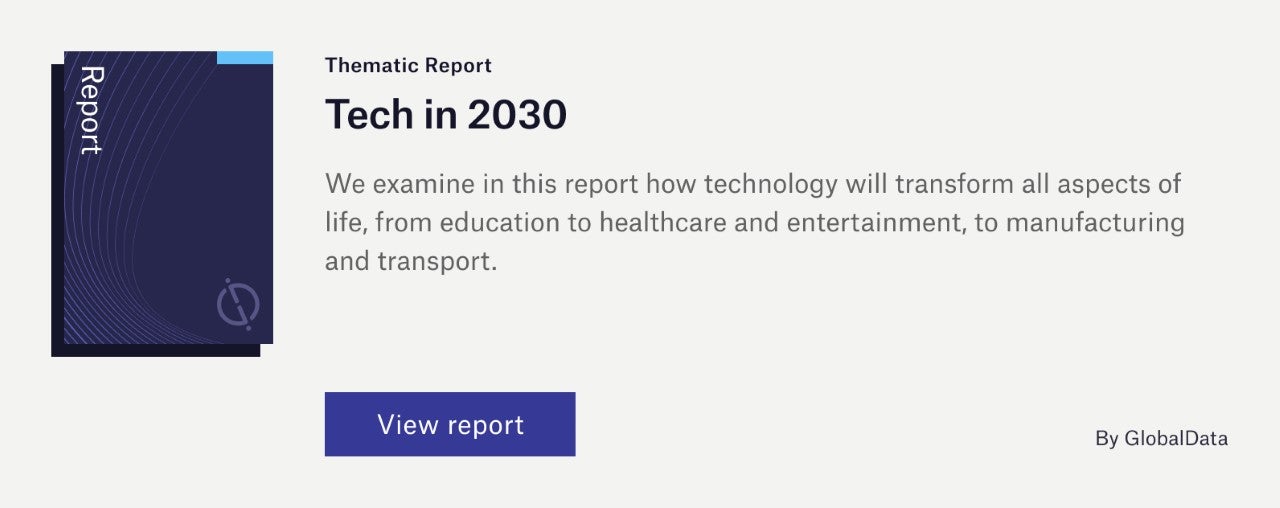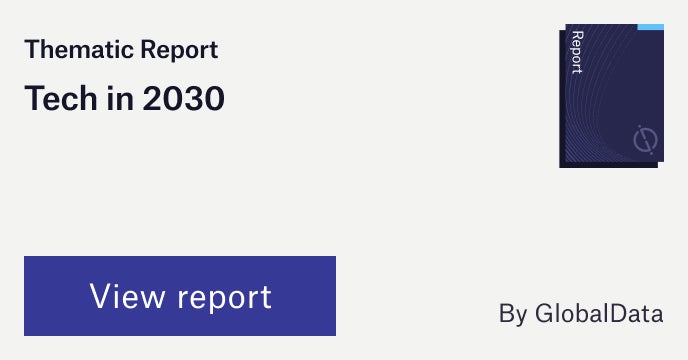The future of the IT Infrastructure industry will be shaped by a range of disruptive themes, with software defined networks being one of the themes that will have a significant impact on IT Infrastructure companies. A detailed analysis of the theme, insights into the leading companies, and their thematic and valuation scorecards are included in GlobalData’s thematic research report,Software Defined Networks – Thematic Research. Buy the report here.

Access deeper industry intelligence
Experience unmatched clarity with a single platform that combines unique data, AI, and human expertise.
In the world of software defined everything (SDE), the details of the underlying hardware become irrelevant and the focus shifts to a virtualised software layer instead. In this world, we no longer think of servers, or even central processing units (CPUs). Instead, we describe the resources that our application requires, and the environment manages the rest. Software defined networks are a part of this new world. The world of SDE brings together technologies that allow for the virtualisation of compute resources (CPUs), memory, storage, connectivity, and network resources in a way that completely separates the underlying hardware from the software that controls it.
Software defined networking (SDN) is a part of the vision embraced by SDE, reflecting a major evolution in the way networks are designed, built, and run. While the term SDN was originally conceived as a technology to be used within data centres it has evolved to incorporate wide area networking as well.
One of the key drivers in this space is a battle royal between the software tribe (developers and cloud providers) and the hardware tribe (network equipment vendors and telecom providers). While the more agile members of the hardware tribe will see growth, the ultimate control of a software defined world will – predictably – lie in the hands of the software tribe.
However, not all companies are equal when it comes to their capabilities and investments in the key themes that matter most to their industry. Understanding how companies are positioned and ranked in the most important themes can be a key leading indicator of their future earnings potential and relative competitive position.
According to GlobalData’s thematic research report, Software Defined Networking, leading adopters include: Alibaba, Alphabet, Amazon, AT&T, Broadcom, BT, China Mobile, Singtel and VMware.
Insights from top ranked companies
VMware
VMware’s NSX technology supports a range of hypervisor and container environments, and benefits from a strong partner ecosystem. However, NSX faces tough competition beyond the data centre.
Alphabet
Google’s cloud platform is the third largest in revenue terms after Amazon and Microsoft. Like its two primary competitors, Google is seeking to redefine the world of infrastructure by ushering in the era of SDE. Google’s platform combines IaaS with a set of PaaS services, coupled with management and deployment services. Like Amazon, Google is a massive user of network bandwidth, and has made a very significant investment in SDN within its internal infrastructure. The company’s Andromeda networking stack manages Google’s SDN, and also underpins recently announced services like Google’s Cloud NAT (network address translation) – which allows users to provision application instances without a public IP address, while also allowing them to access the internet for things like patching and updates.
Cisco
As an established player, Cisco has a huge installed base and has taken up the challenge posed by SDN. Cisco’s Application Centric Infrastructure (ACI) offering is one of the market’s leading SDN products. The company’s plan to extend ACI into public cloud infrastructure (beginning with AWS) highlights the importance of cloud providers in this market. Cisco is the market leader in networking equipment, particularly switches, routers and data centres. The emergence of SDN represented a major threat to companies like Cisco. However, under CEO Chuck Robbins, the company set about shifting its offerings toward software-based networking, security and management products. Cisco’s strategy, bolstered by acquisitions like Jasper Technologies (2016) and BroadSoft (2017) has seen the company’s revenues shift away from hardware towards software and services, in a move that now appears to be bearing fruit with the company returning to revenue growth in the 2018 financial year.
To further understand the key themes and technologies disrupting the technology industry, access GlobalData’s latest thematic research report on Software Defined Networking.
- Nutanix
- Hortonworks
- IBM
- Cloudera
- Red Hat
- Alibaba
- Box
- NetApp
- Shopify
- GoDaddy
- Citrix Systems
- Equinix
- F5 Networks
- PayPal
- NetScout
- RingCentral
- Twilio
- CommVault
- LogMeIn
- Microstrategy
- Zayo
- J2 Global
- 21 Vianet
- Akamai
- LivePerson
- Micro Focus
- Xunlei
- Web.com
- Interxion
- Vonage
Data Insights
From

The gold standard of business intelligence.
Blending expert knowledge with cutting-edge technology, GlobalData’s unrivalled proprietary data will enable you to decode what’s happening in your market. You can make better informed decisions and gain a future-proof advantage over your competitors.









